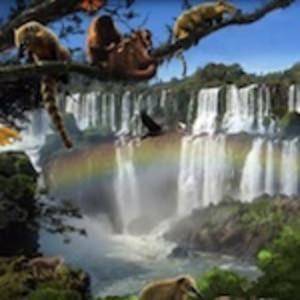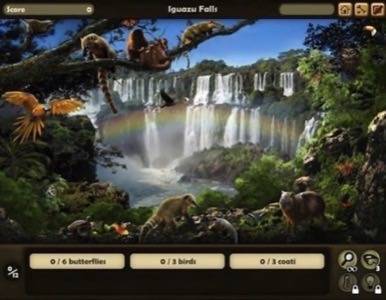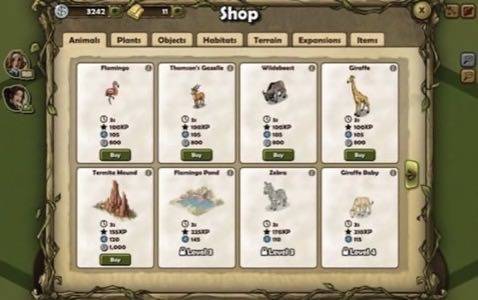Disney is a household name in America. The corporation has its hands in everything, from film, video, theme parks, television, toys and other products, Disney is one of the main manufacturers of American pop culture. Yet its history of cold war propaganda, union-busting, exploitation of sweatshop workers and racist, sexist and homophobic imagery brings with it a darker look at the corporation that manufactures the ideals that seep into our cultural conscience. Its social games unit, Playdom, is making sure that Disney moves its reach into the world’s largest social network, Facebook.

Still in its adolescent phase, transitioning from being a private to a publicly-owned company, Facebook is sinking into every aspect of American pop culture. So Disney is making sure its version of pop culture lives on through Facebook social games. In these types of games, players are implicated in their own narrative, interacting in a virtual reality with other users for one, common goal: to win. Its new hidden object game Animal Kingdom Explorers launches today. It brings forth the current generation of players, cultural ideologies and values, taking its inspiration from select aspects of Disney’s Animal Kingdom Theme Park, specifically Harambe and Anandapur or, as Disney says, Asia and Africa, the two continents that American pop culture easily exoticizes.
The worlds of Animal Kingdom Explorer are based on Disney’s Animal Kingdom theme park, which is located in Walt Disney World Resort. There are seven areas within the park, including Oasis, Discovery Island area, Camp Minnie-Mickey, Africa, Rafiki’s Planet Watch area, Asia and Dinoland USA area. The creators of the Animal Kingdom Explorers game chose to focus on Harambe and Anadapour, or “Africa” and “Asia” broadly.
“When you’re inside of that place, you’re inside of the place not the park,” says VP of Product and Creative Director of Animal Kingdom Explorers Eric Todd. “So if you go to Harambee, you’re not in Orlando, you’re in Africa. If you’re in Anadapour, you’re not in Orlando, you’re in Asia.” In the game, Disney generalizes entire continents. Naturally, the game developers wanted to make sure that the Animal Kingdom Explorers differed from the real-life Disney Animal Kingdom.
“Inside Animal Kingdom the park, there is a little bit of tension between real science and conservation elements versus the more fantastical elements and cartoony elements,” says Todd. “For launch, we wanted to focus on real animals in the real world.”
In the game, players are asked to build a nature preserve rather than a theme park – an environmentally focused game play. Each animal should ideally reside nearby the food it likes to eat. “The animal is happier if it is by stuff that it likes to eat,” says Lead Producer of Animal Kingdom Patrick Hsieh. “The animals are the star of this game.”
Players in Disney’s Animal Kingdom Explorer become part of the Global Wildlife Research (GWR) team. From there, they work together to create their own wildlife preserve and “discover rare and endangered species.” The wildlife nature preserve takes place around the Tree of Life, which is populated by the players’ “favorite exotic animals.” The hidden object search takes place across continents; players travel to the Rocky Mountains, the Amazon rainforest and the Australian Outback. There is no mention of social issues, global warming, war, or genocide. Those might prove a bit too disruptive to the happy animal kingdom, where the animals are having a grand old time. “The player is making it a safe place for those animals,” says Hsieh. “Those problems aren’t present in the preserve.”
Disney’s Problematic Idealized Worlds
“Disney’s idealized worlds rest largely on the artifice of animation: good characters (e.g. Simban, the Sultan, Ariel, Pochahontas) exhibit juvenile traits such as big eyes and round cheeks (Lawrence 67) and are drawn in curves, smooth, round, soft, bring, and with European features; villains (e.g. Scar, Jafar, the Hun, Ratcliffe, Ursula) are drawn with sharp angles, oversized, and often darkly,” writes Lee Artz in his essay “Animating Hierarchy: Disney and the Globalization of Capitalism.”
Taking this idea into the Facebook social game, where the edges of reality and fiction collide in a multi-player virtual reality, it’s possible to “live” in the idealized world that Disney provides. Two buff female explorers, a red-head American and an ambiguously Asian brunette, arrive at the Harambe Wildlife Reserve, which is more broadly defined as “Africa.” There they are greeted by a muscular black man named Ushindi Ibena, who introduces himself as the warden at the Harambe Wildlife Reserve. He is the official tour guide. You can call him “Ushi” for short, in fact. An elderly white man ushers both of them into the preserve. Harambe is a fantastical idyllic natural world; all the players have to do is properly align the animals within it. Take Iguazu Falls, for instance. Players arrive on the scene, find the butterflies, birds and coati, and then advance to the next round.

A similar scene appears in the heavily animal-populated West Savanna, where zebra, elephant, leopard and flamingos all stand still, like an idealized Western view of a “perfect” African landscape. At the very least, players do learn a bit about the animals when they find them in the scene. After players find animals, plants, objects and more, they can check their score in the Shop, which looks quite similar to an e-commerce shopping cart landing page, suggesting the commoditization and capitalist value apparent in “winning” the game itself. The more a player collects, the bigger their “shop” will become, and the better they will look in front of their friends.

All the human player has to do is position each animal nearby the natural element that it prefers. There is no forethought into more complex issues surrounding the construction of a wildlife preserve, such as governmental regulations, the act of bringing animals out of their natural habitat and into a completely new environment, risks of spreading illness, issues of animal death and birth, or even social relations within the animal family. In Disney’s idealized world, all the human player has to do is work with their teammates to build a perfect landscape, and they win the game. The world is yours for the making, player.
It’s Not About Winning or Losing, It’s How You Play the Social Game
How does a player lose the game? The Disney folks had to think about this one for a moment.
“In a hidden object game scene, if you do it slowly you will achieve a lower score than your friends in that scene,” says Todd. The main point is competition with other players. It’s unclear how to actually lose this game, but it’s clear that speed is the key.
Winning, on the other hand, is quite easy.
“There are many ways to win,” says Hsieh. “You make the most amazing and beautiful nature preserve, both for your own sake and so you can share and show it off to your friends.”
There are hundreds of different animals in the game. Every location and place you travel to has a slew of animals.
Says Todd, “Players we’ve shown that to say ‘this is beautiful, I wish I could go there in real life.'”
Disney’s Animal Kingdom Explorer launches on Facebook today. It might eventually move to iOS. For now, it is social only for you and your friends.
Images via Disney.





















